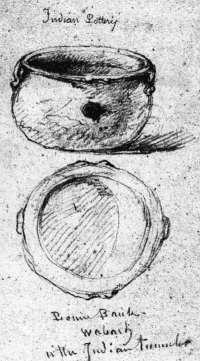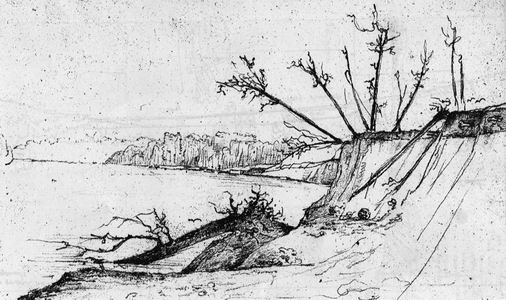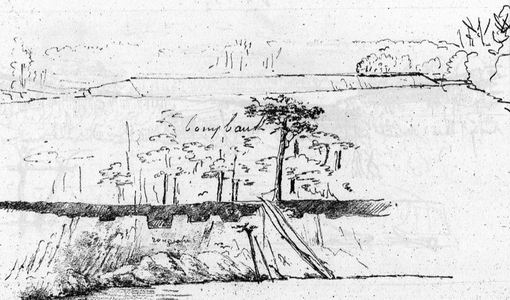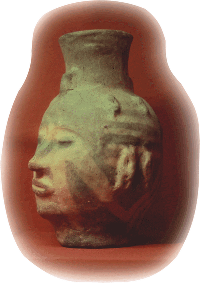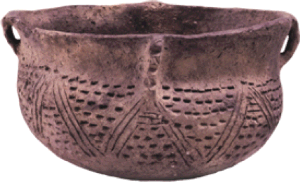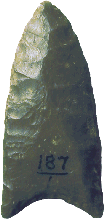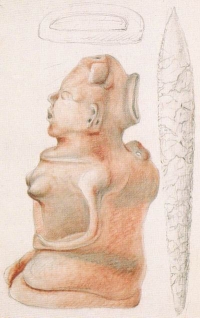
Just the name "Bone Bank" conjures up a picture of washed out human burials and grave goods. These remains caught the attention of early scholars and artifact collectors, including Henry Schoolcraft in 1825. This poster gives an overview of the Bone Bank archaeological site investigations, including Indiana University's rescue excavation project which took place in 2000-2003.
The surviving remnant of the Bone Bank archaeological site is the edge of what was once a large Mississippian village having cemeteries with rowed graves. This community was one of at least four large villages of the late Mississippian Caborn-Welborn culture which occupied the Mouth of the Wabash area ca. A.D. 1400-1700. Caborn-Welborn developed in the wake of large-scale population shifts and social reorganization that followed the decline of Mississippian chiefdoms in the "Vacant Quarter" (Stephen Williams, 1990) and the southward movement of Oneota peoples.
